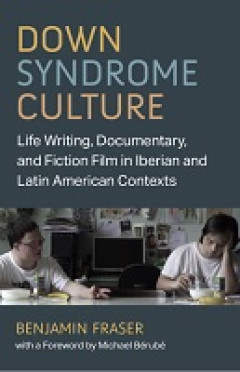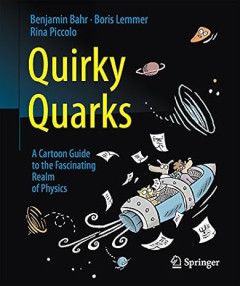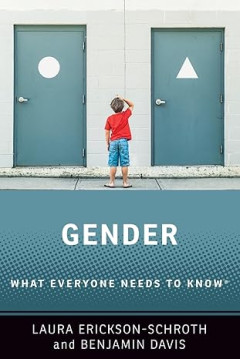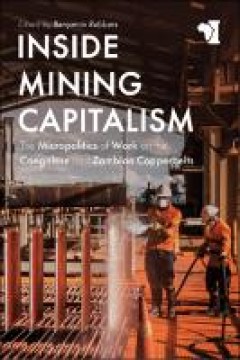Ditapis dengan
E-book Wildlife Ecology : An Environmental Study Unit for 5th - 8th Graders
This unit is about wildlife ecology, and the ways people use information gathered by wildlife ecologists. Students will learn why wildlife ecology is important and how data gathered by ecologists is used to understand and make decisions about the environment. They will develop research skills in a reallife context by going “out into the field” and making first-hand observations of wildlife …
- Edisi
- -
- ISBN/ISSN
- -
- Deskripsi Fisik
- 69 hlm
- Judul Seri
- -
- No. Panggil
- 590 ROS w
E-book The Globalization of Netherlandish Art
Is there a special role for the Low Countries in art history’s current focus on global mobility? How, and why, should we conceive of the globalization of Netherlandish art? The essays brought together in this volume examine how artworks produced in the wake of European expansion – produced in the Netherlands in reaction to the world outside Euro…
- Edisi
- -
- ISBN/ISSN
- 9789004705852
- Deskripsi Fisik
- 332 hlm
- Judul Seri
- -
- No. Panggil
- 949.2 AON t

E-book Near-Death Experiences: Understanding Visions of the Afterlife
Near-death experiences offer a glimpse not only into the nature of death but also into the meaning of life. They are not only useful tools to aid in the human quest to understand death but are also deeply meaningful, transformative experiences for the people who have them. In a unique contribution to the growing and popular literature on the subject, philosophers John Martin Fischer and Benj…
- Edisi
- -
- ISBN/ISSN
- 9780190466602
- Deskripsi Fisik
- 209 halaman
- Judul Seri
- -
- No. Panggil
- 133.901 FIS n
E-book Incorporating the Digital Commons : Corporate Involvement in Free and …
In March of 2012, The Linux Foundation released a report entitled, ‘Linux Kernel Development: How Fast it is Going, Who is Doing It, What They are Doing, and Who is Sponsoring It’. The kernel is an essential part of an operating system that facilitates communication between computer hardware and soft-ware, and the Linux kernel development project is conside…
- Edisi
- -
- ISBN/ISSN
- 9781912656455
- Deskripsi Fisik
- 158 hlm
- Judul Seri
- -
- No. Panggil
- 005.3 BIR i

E-book Down Syndrome Culture: Life Writing, Documentary, and Fiction Film in …
People with Down syndrome possess a culture. They are producers of culture. And in the 21st century, this culture is increasingly visible as a global phenomenon. Down Syndrome Culture examines Down syndrome alongside its social, cultural, and artistic representation. Author Benjamin Fraser draws upon neomaterialist and posthumanist approaches to disability as well as the work of disability theo…
- Edisi
- -
- ISBN/ISSN
- 9780472076918
- Deskripsi Fisik
- 204 halaman
- Judul Seri
- -
- No. Panggil
- 362.4 FRA d
E-book The Medieval Economy of Salvation : Charity, Commerce, and the Rise of…
It was a cold winter evening in 2010, and I had just arrived in Paris for a short research trip. The tiny hotel where I would be staying was on the fifth floor of the ophthalmological wing of the hôtel-Dieu (or hospital) just across from the cathedral of Notre Dame. 1 Given the subject of the book I was in France to research, it seemed appropri-ate that I should s…
- Edisi
- -
- ISBN/ISSN
- 9781501742118
- Deskripsi Fisik
- 336 hlm
- Judul Seri
- -
- No. Panggil
- 909.5 DAV t
E-book Playful Materialities : The Stuff That Games Are Made Of
Augmented reality can be understood as an integration of the virtual into the real or augmentation thereof. This places augmented reality on the ‘reality’ side of the mixed reality continuum,1 meaning that virtual elements usually exist as foreign bodies in a real space. While there are many possible applications for augmented reality, its potential for a…
- Edisi
- -
- ISBN/ISSN
- 9783839462003
- Deskripsi Fisik
- 405 hlm
- Judul Seri
- -
- No. Panggil
- 005.5 BEI p
E-book Representing Poverty and Precarity in a Postcolonial World
“Precarity is everywhere today”, French sociologist Pierre Bourdieu announced in a lecture in 1997 (qtd. in Springveld 26). “[P] recarity is not a passing or episodic condition, but a new form of regulation that distinguishes this historical time”, American philosopher Judith Butler writes in her foreword to German political theorist Isabell Lorey’s study State of Insecurity: Governme…
- Edisi
- -
- ISBN/ISSN
- 9789004466395
- Deskripsi Fisik
- 302 hlm
- Judul Seri
- -
- No. Panggil
- 801.9 CLI r

E-book Quirky Quarks: A Cartoon Guide to the Fascinating Realm of Physics
Do you love quantum physics, cosmology, and the humor behind the popular television show The Big Bang Theory? Have you been on the lookout for a fun, non-technical explanation of the science behind things like time travel, wormholes, antimatter, and dark energy? You’ll find all of that, and more, inside this fact-filled, cartoon-packed book. In Quirky Quarks: A Cartoon Guide to the Fa…
- Edisi
- -
- ISBN/ISSN
- 9783662495070
- Deskripsi Fisik
- 338 halaman, ilus.
- Judul Seri
- -
- No. Panggil
- 001.01 BAH q
E-book Rivers of the Anthropocene
“There was no such thing as the Scientific Revolution, and this is a book about it” (Shapin 1996, 1). So began Stephen Shapin’s The Scientific Revolution, a work, con-cise and smart, that embodied an approach to the history of science termed “the social construction of science.” Shapin argued that if we are going to talk about a “scientific revolution,” then we need to see it not …
- Edisi
- -
- ISBN/ISSN
- 9780520967939
- Deskripsi Fisik
- 244 hlm
- Judul Seri
- -
- No. Panggil
- 550 BEN r
E-book A Greek State in Formation : The Origins of Mycenaean Pylos
The Bronze Age in Greece began around 3100 B.C. with the first bronze work-ing for the manufacture of tools and weapons (see map 1). Already in the Neo-lithic, there had been limited use of copper, the essential ingredient of bronze, while stone tools were still essential for some purposes in the Bronze Age. Copper typically was alloyed with tin to produce bronze, but…
- Edisi
- -
- ISBN/ISSN
- 9780520387256
- Deskripsi Fisik
- 2022
- Judul Seri
- -
- No. Panggil
- 930.1495 DAV a
E-book Atlas of Petromodernity
In classical mythology, Atlas carries the weight of the world and the star-studded sky on his shoulders. Much like his brother Prometheus, Atlas, a Titan, is punished by the victorious Olym-pian gods, led by Zeus, for siding with Kronos and the humans created by the Titans in the war against them. Prometheus is also notorious for having given humanity fire. Consequently, he…
- Edisi
- -
- ISBN/ISSN
- 9781685712198
- Deskripsi Fisik
- 361 hlm
- Judul Seri
- -
- No. Panggil
- 665.5 KLO a

E-book Gender: What Everyone Needs to Know®
The term "gender" was first distinguished from "sex" in the 1950s, when psychologists began to discuss the idea of "gender roles"--behaviors and responsibilities given to people by a society rather than flowing from their biology. Over the last two decades, transgender people have expanded our understanding of gender even further, introducing to the mainstream the concept of "gender identity," …
- Edisi
- -
- ISBN/ISSN
- 9780190880026
- Deskripsi Fisik
- 209 halaman
- Judul Seri
- -
- No. Panggil
- 305.3 ERI g

E-book The Made-Up State : Technology, Trans Femininity, and Citizenship in I…
Maya Puspa steps out of her home and salon with confidence and grace, narrowly avoiding the puddles that have transformed her lane into a muddy track. She smiles, arching her thin, penciled-on eyebrows as she turns to a group of elderly men gathered over a chessboard. It is her evening walk and, cheerily greeting the men, Maya strides out of her lane and onto a city street. Maya li…
- Edisi
- -
- ISBN/ISSN
- 9781501766664
- Deskripsi Fisik
- 198 hlm
- Judul Seri
- -
- No. Panggil
- 306.74 HEG t

E-book Warping Time : How Contending Political Forces Manipulate the Past, Pr…
In a 2017 speech, Virginia governor Terry McAuliffe declared that the Confederate monuments should be removed because they helped to keep racism alive in present-day institutions and attitudes. President Donald Trump, for his part, argued that those attempting to remove the monu-ments were seeking to rewrite history in order to remove all traces of ideas with whi…
- Edisi
- -
- ISBN/ISSN
- 9780472903344
- Deskripsi Fisik
- 159 hlm
- Judul Seri
- -
- No. Panggil
- 320 GIN w

E-book Aramaic Daniel : A Textual Reconstruction of Chapters 1–7
The book of Daniel (Dan) presents us with many indications of multiple authorship and a complicated textual history. Most obviously, there are the oppositions of genre and language. Dan 1–6 contain loosely connected court tales, mostly narrated in the third person.1 Dan 7–12 contain apocalypses, mostly narrated in the first person.2 Largely but not e…
- Edisi
- -
- ISBN/ISSN
- 9789004521308
- Deskripsi Fisik
- 261 hlm
- Judul Seri
- -
- No. Panggil
- 228 SUC a

E-book Relative Histories : Mediating History in Asian American Family Memoirs
In general, I distinguish between four models of the kind of text gener-ally (in publishing and reviews) classified as “family memoirs”. As with all forms of literature, there are no definitive barriers between the forms I clas-sify as distinct. Part of my interest in contemporary auto/biographical writ-ing lies in how writers continually open up possibilities for self-representation throug…
- Edisi
- -
- ISBN/ISSN
- 9780824895358
- Deskripsi Fisik
- 201 hlm
- Judul Seri
- -
- No. Panggil
- 305.8 DAV r
E-book Making Ammonia : Fritz Haber, Walther Nernst, and the Nature of Scient…
The discovery of ammonia synthesis from the elements forms the basis of dis-cussion for many topics including fertilizer and food, environmental protection,the repercussions of scientific research, and economic transformation, as well asother industrial, political, and social events. The story in this book focuses on thedevelopment of the natural sciences and de…
- Edisi
- -
- ISBN/ISSN
- 9783030855321
- Deskripsi Fisik
- 273 hlm
- Judul Seri
- -
- No. Panggil
- 661.3 JOH m
E-book Eyewitness Travel: Boston
See all of the beautiful and historic sites of Boston with our DK Eyewitness Travel Guide. Whether you're on the lookout for walking tours, scenic sites, and outdoor activities, or you're planning on enjoying attractions like Boston Common, Fenway Park, or historic Harvard University, our travel guide has all the best tips for every budget, plus restaurant and hotel recommendations and fun acti…
- Edisi
- -
- ISBN/ISSN
- 9781465460264
- Deskripsi Fisik
- 210 halaman, ilus.
- Judul Seri
- -
- No. Panggil
- 910 BRO e

E-book The Autobiography of Benjamin Franklin
Benjamin Franklin was born in Milk Street, Boston, on January 6, 1706. His father, Josiah Franklin, was a tallow chandler who married twice, and of his seventeen children Benjamin was the youngest son. His schooling ended at ten, and at twelve he was bound apprentice to his brother James, a printer, who published the “New England Courant.” To this journal he became a contributor, and later …
- Edisi
- -
- ISBN/ISSN
- -
- Deskripsi Fisik
- 161 hlm
- Judul Seri
- -
- No. Panggil
- 920 FRA t
E-book Animal Emotions : How They Drive Human Behavior
Uually, our emotions are strongly controlled. Therefore, we seldom experience situations of raw affect, where emotions simply overwhelm us. This is basically a good thing, because controlling our ancestral emotional urges helps us to respond more appropriately to most of the daily situational demands of our modern society. It is simply not acceptable to always show an emotional response i…
- Edisi
- -
- ISBN/ISSN
- 9781950192915
- Deskripsi Fisik
- 161 hlm
- Judul Seri
- -
- No. Panggil
- 591.5 MON a

E-book Moral Dimensions of Humour: Essays on Humans, Heroes and Monsters
This volume explores the concept of humour and its relationship with human behaviour. The interdisciplinary essays in this book cover a wide range of time, from the sixteenth century to the present day. They delve into various cultural contexts, challenging social norms and prompting readers to reflect on the ethical implications of humour. The collection highlights the varied metaphors of hero…
- Edisi
- -
- ISBN/ISSN
- 9789523590533
- Deskripsi Fisik
- 238 halaman
- Judul Seri
- -
- No. Panggil
- 152.4 NIC m
E-book A Young Englishman in Victorian Hong Kong : The Diaries of Chaloner Al…
hroughout his adult life, Alabaster kept diaries. In 1987, they were donated to the Library of the School of Oriental and African Studies at the University of London.2 For much of his career, the diaries list his daily appointments and meetings with only brief notices of personal events; for this he used Letts’s brand diaries, one day for each page. However, the first four volume…
- Edisi
- -
- ISBN/ISSN
- 9781760465926
- Deskripsi Fisik
- 234 hlm
- Judul Seri
- -
- No. Panggil
- 951.2 PEN a
E-book A Complete Guide to Maggot Therapy : Clinical Practice, Therapeutic Pr…
There is a large and mostly unmet global need for affordable and efficacious wound care, despite modern-day medicine advancing at break-neck speed. Indeed, the tide of chronic wounds is rising. Modern lifestyle changes, particularly in low- and middle-income countries (LMICs), bring a rapid rise in non-communicable disease including cardiovascular disease, o…
- Edisi
- -
- ISBN/ISSN
- 9781800647305
- Deskripsi Fisik
- 470 hlm
- Judul Seri
- -
- No. Panggil
- 615.5 STA a
E-book Creative Close-Ups: Digital Photography Tips & Techniques
- Edisi
- -
- ISBN/ISSN
- 978047052712
- Deskripsi Fisik
- 243 halaman, ilus.
- Judul Seri
- -
- No. Panggil
- 770 DAV c
- Edisi
- -
- ISBN/ISSN
- 978047052712
- Deskripsi Fisik
- 243 halaman, ilus.
- Judul Seri
- -
- No. Panggil
- 770 DAV c
E-Book Arts for Transformative Education: A Guide for Teachers from the UNESC…
The arts offer tremendous potential for enriching, enlivening and propelling learning that transforms individuals and communities. Arts learning fuels transformative education that helps increase students’ capacity and motivation to build a more peaceful and sustainable world. However, to fully realize that potential, teachers must mindfully structure and support educational experiences to op…
- Edisi
- -
- ISBN/ISSN
- 9789231006517
- Deskripsi Fisik
- 67 halaman
- Judul Seri
- -
- No. Panggil
- 707 UNE a

E-Book The End of the Book of Numbers: On Pentateuchal Models and Composition…
It has become increasingly clear that Numbers is the litmus test for new ideas relating to the formation of the Pentateuch. At the same time the profusion of ideas has only resulted in a corresponding lack of agreement between scholars. In the present study, Jordan Davis grants significant attention to the geographical references found at the end of the book of Numbers, combining archaeological…
- Edisi
- -
- ISBN/ISSN
- 9783161618567
- Deskripsi Fisik
- 326 halaman
- Judul Seri
- -
- No. Panggil
- 200.19 DAV t
E-book The Republic
The Republic of Plato is the longest of his works with the exception of the Laws, and is certainly the greatest of them. There are nearer approaches to modern metaphysics in the Philebus and in the Sophist; the Politicus or Statesman is more ideal; the form and institutions of the State are more clearly drawn out in the Laws; as works of art, the Symposium and the Protagoras are of higher excel…
- Edisi
- -
- ISBN/ISSN
- -
- Deskripsi Fisik
- 372 hlm
- Judul Seri
- -
- No. Panggil
- 321.07 PLA t

E-Book The Standard Language Ideology of the Hebrew and Arabic Grammarians of…
As a discipline, the study of Biblical Hebrew grammar began largely among Arabic-speaking Jews of the Middle Ages, particularly in the ʿAbbasid period (750–1258 CE). Indeed, it has long been acknowledged by scholars that the Hebrew grammatical tradition, in many ways, grew up out of and alongside the Arabic grammatical tradition. Many concepts present in Hebrew grammar have their origins in …
- Edisi
- -
- ISBN/ISSN
- 9781805111825
- Deskripsi Fisik
- 235 halaman
- Judul Seri
- -
- No. Panggil
- 417.7 KAN t

E-Book Inside Mining Capitalism: The Micropolitics of Work on the Congolese a…
- Edisi
- -
- ISBN/ISSN
- 9781800103184
- Deskripsi Fisik
- 186 halaman
- Judul Seri
- -
- No. Panggil
- 338.2 RUB i
- Edisi
- -
- ISBN/ISSN
- 9781800103184
- Deskripsi Fisik
- 186 halaman
- Judul Seri
- -
- No. Panggil
- 338.2 RUB i

E-Book Russia’s North Pacific: Centres and Peripheries
"The series “Russia and the Asia-Pacific” explores political, economic, social, cultural and environmental interactions of the Russian Far East within its Asian-Pacific context as well as with the Russian capital in the past and present. Its first volume addresses from a multidisciplinary perspective notably the following questions: How were and are directives from a centre thousands of kil…
- Edisi
- -
- ISBN/ISSN
- 9783968221885
- Deskripsi Fisik
- 250 halaman
- Judul Seri
- -
- No. Panggil
- 947 DAH r
E-book Emerging Threats of Synthetic Biology and Biotechnology : Addressing S…
Synthetic biology raises the possibility that pathogenic bioweapons could be designed, developed, and deployed in new ways that diverge from the disease-causing characteristics of naturally occurring pathogens (NAS 2018). Traditionally, only known pathogens found naturally in the environment, such as B. anthracis and Y. pestis, were developed as biological weapons because o…
- Edisi
- -
- ISBN/ISSN
- 9789402420869
- Deskripsi Fisik
- 233 hlm
- Judul Seri
- -
- No. Panggil
- 610.28 TRU e
E-book Working-Class Literature(s) : Historical and International Perspectives
The idea for this collection was born out of a chance encounter over coffee in a U.S. Starbucks. Over a wide-ranging conversation, we discussed the state of working-class literature as a field, the de-cline of Marxism in academia, our favorite working-class authors, and the lack of good coffe shops on U.S. campuses. We both gen-erally laid out the various trajectories of scholarly rec…
- Edisi
- -
- ISBN/ISSN
- 9789176350485
- Deskripsi Fisik
- 249 hlm
- Judul Seri
- -
- No. Panggil
- 809 BAL w
E-book Reimagining Urban Nature : Literary Imaginaries for Posthuman Cities
We, entangled humans and nonhumans, are at a critical point in managing environmental degradation, with human-induced environ-mental change occurring on a grand scale. Several environmental problems need urgent attention, including climate change, the sixth great extinction of plants and other animals, and increasing resource depletion in some of the most vuln…
- Edisi
- -
- ISBN/ISSN
- 9781802079081
- Deskripsi Fisik
- 280 hlm
- Judul Seri
- -
- No. Panggil
- 307.76 BOR r
E-book The Train That Had Wings : Selected Stories of M. Mukundan
Before the 1960s, Malayalam literature, whether poetry, novel,or short story, had been dominated by a parochialism centeredon the lives and experiences of Kerala, a small state of palmtrees, trading ports, and paddy fields in southwestern India.Most literary productions from this period in Kerala's historydepicted scenes, people, habits, and conflicts …
- Edisi
- -
- ISBN/ISSN
- 9780472901678
- Deskripsi Fisik
- 147 hlm
- Judul Seri
- -
- No. Panggil
- 891.3 MUK t
E-book Travel Writingson Asia Curiosity, Identities, and Knowledge Across the…
Alexander von Humboldt starts his “Critical Inquiries” in 1852 withthe observation that the miscalculation of one authority has triggeredmany forms of human action in exploring the planet. It is for him theact of travelling that generates knowledge and ultimately drives forwardhuman intellectual progress, even if the travellers themselves might bemisguided. Human triggers and reasons for tr…
- Edisi
- -
- ISBN/ISSN
- 9789811901249
- Deskripsi Fisik
- 320 hlm
- Judul Seri
- -
- No. Panggil
- 910.4 ASK t
E-book The Least Developed Countries in the Post-Covid World : Learning from …
This year marks 50 years since the least developed countries (LDCs) category was established by a United Nations General Assembly resolution, following research, analysis and advocacy work by the United Nations Conference on Trade and Development (UNCTAD). This pivotal landmark comes as intergovernmental negotiations are taking shape for a new programme of action for the LDCs for the decade 202…
- Edisi
- -
- ISBN/ISSN
- 9789210056052
- Deskripsi Fisik
- 180 hlm
- Judul Seri
- -
- No. Panggil
- 338.9 TRA t

Systems Engineering and analysis
This book is about systems. It focuses on the engineering of systems, and upon systems analysis. In the first case, the concern is with improving systems already in existence. Topics presented in this book have been developed and organized into six parts. This book is intended for use in the classroom at either the undergraduate or graduate level or by the practicing professional in industry, b…
- Edisi
- -
- ISBN/ISSN
- 0138808406
- Deskripsi Fisik
- x + 706 hal; 18 x 24..5 cm
- Judul Seri
- -
- No. Panggil
- 620 BLA s
E-book The lion and the unicorn
Prentiss had a long lease on the house, and because it stood in Jermyn Street the upper floors were, as a matter of course, turned into lodgings for single gentlemen; and because Prentiss was a Florist to the Queen, he placed a lion and unicorn over his flowershop, just in front of the middle window on the first floor. By stretching a little, each of them could see into the window just be…
- Edisi
- -
- ISBN/ISSN
- -
- Deskripsi Fisik
- 168 hlm; 0.3 mb
- Judul Seri
- -
- No. Panggil
- 823 DAV t
E-book Real soldiers of fortune
- Edisi
- -
- ISBN/ISSN
- -
- Deskripsi Fisik
- 187 hlm; 0.3 mb
- Judul Seri
- -
- No. Panggil
- 823 DAV r
- Edisi
- -
- ISBN/ISSN
- -
- Deskripsi Fisik
- 187 hlm; 0.3 mb
- Judul Seri
- -
- No. Panggil
- 823 DAV r

Tes eq anda : Bagaimana menemukan kecerdasan anda yang sebenarnya
- Edisi
- -
- ISBN/ISSN
- 9789793943039
- Deskripsi Fisik
- iv; 128 hlm; 20.5cm
- Judul Seri
- -
- No. Panggil
- 153.9
- Edisi
- -
- ISBN/ISSN
- 9789793943039
- Deskripsi Fisik
- iv; 128 hlm; 20.5cm
- Judul Seri
- -
- No. Panggil
- 153.9

GERAKAN DAN SERANGAN GULAT PERAIH KEMENANGAN
- Edisi
- cet. 1
- ISBN/ISSN
- 978-979-01456-8
- Deskripsi Fisik
- xii; 195 hlm; illus;21 x 30 cm
- Judul Seri
- -
- No. Panggil
- 796.8 MYS g
- Edisi
- cet. 1
- ISBN/ISSN
- 978-979-01456-8
- Deskripsi Fisik
- xii; 195 hlm; illus;21 x 30 cm
- Judul Seri
- -
- No. Panggil
- 796.8 MYS g

GERAKAN DAN SERANGAN GULAT PERAIH KEMENANGAN
- Edisi
- cet. 1
- ISBN/ISSN
- 978-979-01456-8
- Deskripsi Fisik
- xii; 195 hlm; illus;21 x 30 cm
- Judul Seri
- -
- No. Panggil
- 796.8 MYS g
- Edisi
- cet. 1
- ISBN/ISSN
- 978-979-01456-8
- Deskripsi Fisik
- xii; 195 hlm; illus;21 x 30 cm
- Judul Seri
- -
- No. Panggil
- 796.8 MYS g

GERAKAN DAN SERANGAN GULAT PERAIH KEMENANGAN
- Edisi
- cet. 1
- ISBN/ISSN
- 978-979-01456-8
- Deskripsi Fisik
- xii; 195 hlm; illus;21 x 30 cm
- Judul Seri
- -
- No. Panggil
- 796.8 MYS g
- Edisi
- cet. 1
- ISBN/ISSN
- 978-979-01456-8
- Deskripsi Fisik
- xii; 195 hlm; illus;21 x 30 cm
- Judul Seri
- -
- No. Panggil
- 796.8 MYS g
 Karya Umum
Karya Umum  Filsafat
Filsafat  Agama
Agama  Ilmu-ilmu Sosial
Ilmu-ilmu Sosial  Bahasa
Bahasa  Ilmu-ilmu Murni
Ilmu-ilmu Murni  Ilmu-ilmu Terapan
Ilmu-ilmu Terapan  Kesenian, Hiburan, dan Olahraga
Kesenian, Hiburan, dan Olahraga  Kesusastraan
Kesusastraan  Geografi dan Sejarah
Geografi dan Sejarah